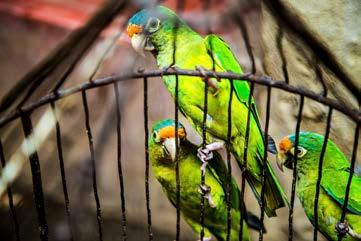
2 minute read
Kids’ Corner
by JBMC Media
BUYING A BIRD? Consider these tips from area student and bird owner
By Brandon Reed
Advertisement
Birds are fascinating creatures, whether in the wild or as a pet. Owning one is challenging yet rewarding. Though constantly cleaning out cages, feeding them, and replacing toys takes tremendous effort, you’ll always have a feathery companion if you take good care of your bird.
Wondering which types of birds make the best pets? Macaws, African grey parrots, Amazon parrots, cockatoos, cockatiels, lovebirds, parakeets, finches, canaries, doves and lorikeets top the list. When choosing the type of bird you’d like, consider size, lifespan (which can be from 5 to 100 years), and price. Note that the costs can vary greatly, from $25 to $10,000. You should also consider their temperament and noise-making level before you decide on a species.
The next step is to consider which supplies you’ll need. When it comes to cages, it’s a good idea to always purchase the largest cage possible. Don’t forget to consider other necessities such as perches, toys, seed bowls, and water bowls. Next, determine where you’ll place your cage inside your home. It’s best to place it next to a wall where there’s indirect sunlight, but not directly in front of a window. Also, avoid placing it in the kitchen, as fumes from your cooking could hurt them. A little preparation helps your buddy adjust to its new home.
Once your bird comes home, you’ll need to consider proper care and feeding. Of course, birds eat bird seed, but most also like fruits and vegetables, such as celery, broccoli peas, cauliflower, and carrots. Do not feed them avocado, onion, fruit pits, apple seeds, peanuts, corn, mushrooms, or dairy (because they are lactose intolerant). Be sure to change their water everyday and clean their cage every two or three days. Vinegar with water makes an excellent cleaning solution, and clean up is easier if you line their cage with newspaper. Lastly, consider that birds need affection and attention, just like dogs and cats. Aim for at least two hours of interaction on most days. You can hold them, talk to them, sing with them, and let them fly. If you’re not committed to doing these things, it may not be the right time to bring a bird home.
Be patient with your bird. It takes time for them to adapt to you and their new home. It is a lot of work, but it pays off when these social, enjoyable, and extremely intelligent animals become your friend.










